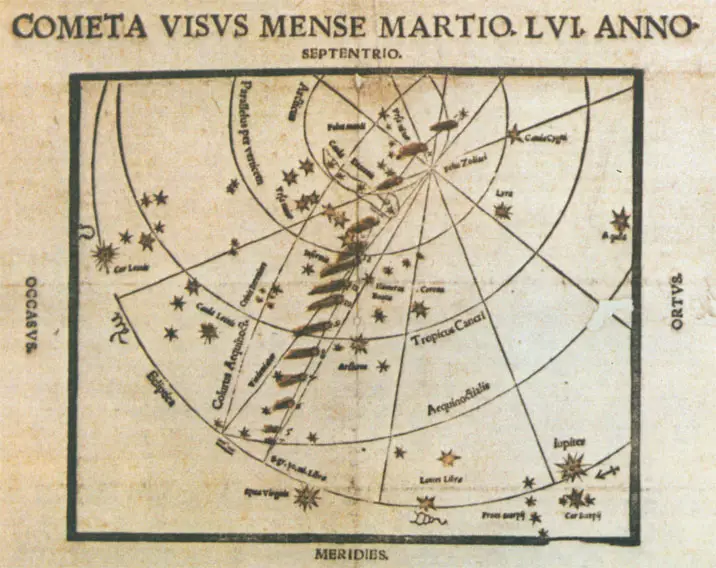On this day in Tudor history, 9th March 1589, Lady Frances Radcliffe, Countess of Sussex, and wife of Sir Thomas Radcliffe, Lord Fitzwalter and 3rd Earl of Sussex, died at her home in Bermondsey.
Frances is known for being the benefactor of Cambridge University's Sidney Sussex College, but there is much more to her than that. Her enemies even turned her husband and Queen Elizabeth I against her at one point!
Find out all about Frances Radcliffe (née Sidney) in today's talk.
Also on this day in history, 9th March 1566, a pregnant Mary, Queen of Scots witnessed the murder of her private secretary, David Rizzio, by a gang of assassins led by her husband, Lord Darnley. Find out more in last year's video:
Also on this day in history:
- 1528 – Death of Sir Ralph Egerton, courtier, administrator and a favourite during the early reign of Henry VIII. In 1513, he was a Standard Bearer in France, keeping that office until 1524, and was knighted after the capture of Tournai. He also served as a Knight of the Body and Treasurer of the Council in the Marches of Wales. He was buried in his chantry chapel at Bunbury.
- 1571 – Death of Sir Clement Heigham, Judge, Speaker of the House of Commons and Chief Baron of the Exchequer in Elizabeth I's reign. He was buried at Barrow Church in Suffolk.
- 1578 – Death of Lady Margaret Douglas, Countess of Lennox, daughter of Margaret Tudor and Archibald Douglas, 6th Earl of Angus. She was buried at Westminster Abbey, in the Henry VII Chapel.
- 1579 – Burial of Sir Nicholas Bacon, lawyer, administrator and poetry lover, in St Paul's Cathedral. He had died on 20th February.
Transcript:
On this day in Tudor history, 9th March 1589, Lady Frances Radcliffe, Countess of Sussex, wife of Sir Thomas Radcliffe, Lord Fitzwalter and 3rd Earl of Sussex, died at her home in Bermondsey. She was buried at Westminster Abbey in the Chapel of St Paul.
Here are some facts about this Tudor lady:
• Frances was born in around 1531 and was the 4th daughter of Sir William Sidney, and his wife, Anne Pagenham.
• Poets Sir Philip Sidney and Sir Robert Sidney were her nephews.
• In 1555, Frances married Thomas Radcliffe, Lord Fitzwalter, as his second wife, at Hampton Court Palace. Mary I’s husband, Philip of Spain, participated in the celebratory jousts for the wedding.
• Frances’s husband was made Earl of Sussex in1557.
• Frances resided in Ireland when he husband was Lord Deputy and Lord Lieutenant there between 1556 and 1564. She also accompanied him to Berwick after his appointment as President of the North in 1568 and she caught smallpox there, but fortunately survived.
• In 1571, Frances and Thomas played host to Queen Elizabeth I at their home in Bermondsey.
• In 1572, Thomas was made Lord Chamberlain of the Household, and in 1574 he was rewarded with New Hall in Essex, along with a number of manors.
• It is not known exactly when Frances was appointed as one of Queen Elizabeth I’s ladies of the bedchamber, but was probably in the late 1570s.
• In the early 1580s, Frances had three works dedicated to her.
• Frances did not have any children by Thomas, and he died in June 1583. Frances’s biographer, Mary Prior, writes of how “In his last months the countess's enemies (unspecified) alienated his affections from her, and turned the queen against her”, and that Frances ended up turning to royal favourite, Sir Christopher Hatton, to intercede with the queen, asking him to deliver a letter to the queen in which she expressed her loyalty to both the queen and to Thomas. Unfortunately, she was unable to recover her husband’s affections, but she did inherit his wealth.
• Following Thomas’s death, she was pursued by politician Arthur Hall, who had a reputation for trouble. Frances rebuffed him and as revenge he attacked her in his book. He ended up being imprisoned for impugning the authority of Parliament and defaming some of its members.
• Frances made her will in December 1588 and died on this day in 1589. She is known for being the benefactor of Sidney Sussex College at Cambridge, and left £5000, plus plate and other possessions for a “good and godly monument for the mayntenance of good learning”, Lady Sidney Sussex College.
• Frances also left bequests for her Sidney family, poor Puritan preachers in London, and for a lectureship at Westminster Abbey.
• Frances’s monument, which is 24 feet high and made from alabaster, can be found in the Chapel of St Paul in Westminster Abbey. It features an effigy of her wearing a long, red robe, lined with ermine, and wearing a gilded countess’s coronet. The Sidney family crest of a blue and gold porcupine made in wood is at her feet.
The inscription on her tomb, translated from Latin reads:
“Here lyeth the most honorable lady Frances, sometime Countess of Sussex daughter of Sir William Sidney of Penshurst, Knight; wife and widow to ye most noble, most wise and most martial GentlemanThomas Radclif Earl of Sussex; a woman while she lived adorned with many and most rare gifts both of mind and body, towards God truly and zealously religious: to her friends and kinsfolk most liberal: to the poore, to prisoners and to the ministers of the word of God, always most charitable. By her last will and testament she instituted a divinity lecture to be read in this Collegiate Church and by the same her testament gave also five thousand pounds towards the building of a new college in the University of Cambridge, with sufficient yearly revenue for the continual maintenance of one Master, 10 Fellows, and 20 Scholars, either in ye same College or else in another house in ye said University already builded, commonly called Clare Hall. She lived 58 years and died ye 9 of March, and was buried ye 15 of Aprile 1589.”



Leave a Reply